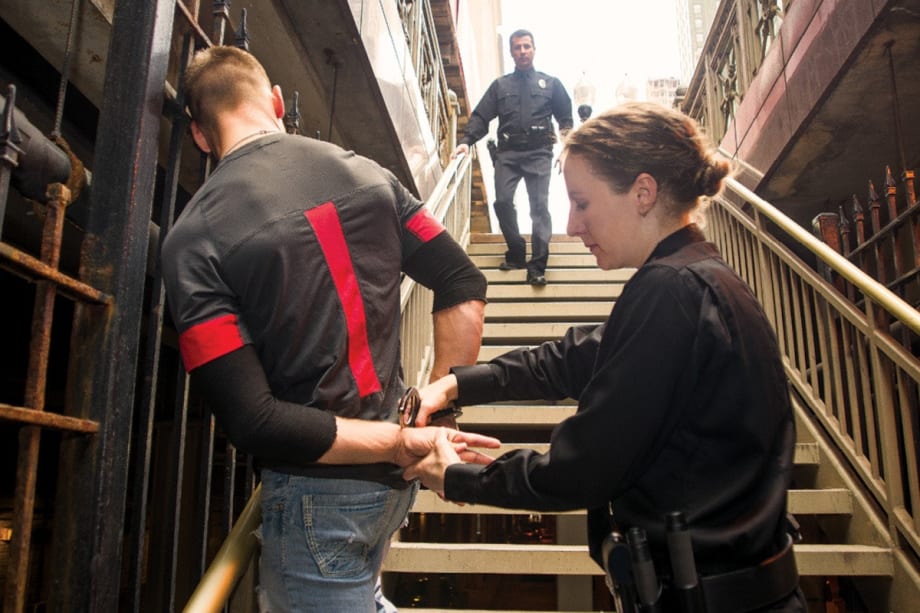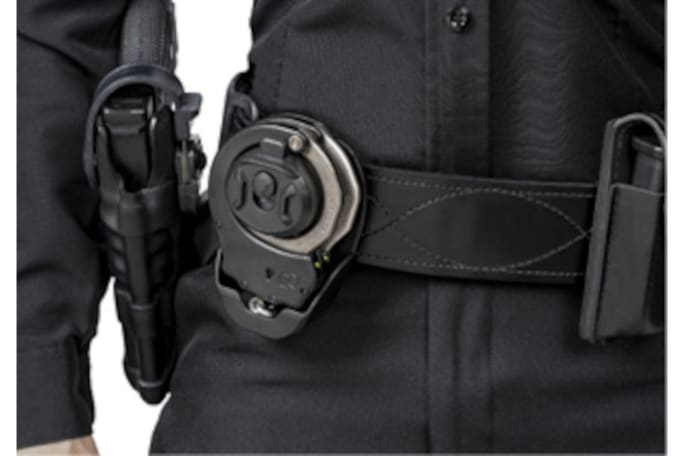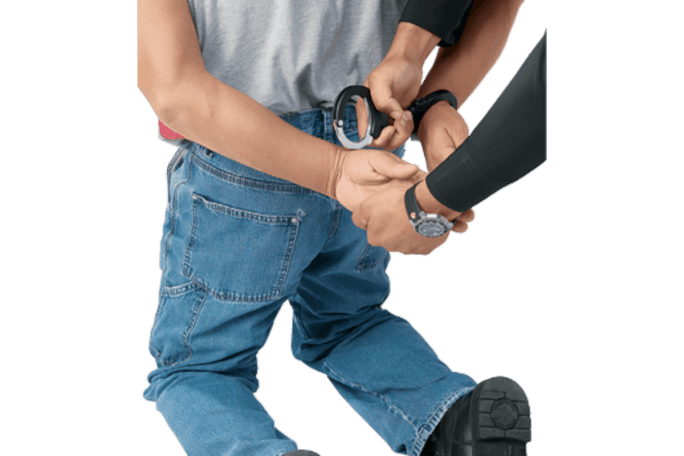Once the decision is made to effect the arrest, you should always handcuff the subject.
Proper stance is paramount and sets you up for success in this action. Think of your stance as a pyramid. You must have a wide base, a deep base, a low center and your head over your center. The wide base (feet shoulder width apart) gives you stability side to side. The deep base (feet usually one step apart) gives you stability front to back, a low center (knees slightly bent) gives you stability from angles and the head over center allows you to maintain proper balance.
Next, position the subject. Verbally instruct the subject to turn around. Handcuffing should be done behind the back, under normal circumstances with chain or hinge cuffs, with the palms facing outward away from one another.
Instead of directing the subject into an airplane stance or readying them for a football stance, tell them to do the opposite of how you positioned yourself. Tell them to “Turn around, put your feet together, lean forward and place your hands behind your back.” In this position, to run or fight they have to make an overt action that you will see or feel when making contact. Instead of having them widen their feet and get a good base or readying them to fight with you, decentralize the subject and put them at a disadvantage.
Ensure you can see their palms. Officers do not get stabbed or shot when you can see a subject’s palms. If you cannot see their palms, you are not in a safe place. With the subject positioned properly, you approach the subject from a rearward 45-degree angle. This decreases the amount of personal weapon systems they physically have to use against you. Do not get out your cuffs until both you and the subject are in the correct position.














